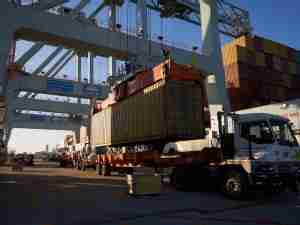With 6,000 new warehouse jobs, what is Amazon really delivering?
By: Reuters | Jun 18 2015 at 05:06 PM | Intermodal
Some people showed up before dawn. Others spent an hour waiting on a line that stretched out the door. That was the scene last month when hundreds of job seekers converged on an Amazon hiring event in Chattanooga, Tennessee. All hoped for full-time work picking, packing and shipping orders at the online retailer’s local distribution center, a warehouse the size of 28 football fields. “I’m blessed to be here!” one smiling 23-year-old applicant told television reporters.
That spectacle could be coming this summer to a city near you. On May 26, Amazon announced 6,000 new full-time job openings at 19 of its distribution centers. Many are in communities that doled out generous tax credits and other incentives — including $10.3 million in Kenosha, Wisconsin, alone — to bring Amazon jobs to town.
So it’s a good time to ask: Are Amazon’s warehouse jobs worth lining up for? Should they be subsidized with taxpayer dollars? And what do they mean to the long-term economic health of their host communities?
On his 2013 jobs tour, President Barack Obama stopped to deliver a speech at the aforementioned Amazon warehouse in Chattanooga. The audience cheered when he called for restoring the middle class through “good jobs with good wages.” But today that same warehouse is hiring at $11.25 an hour. That’s $23,400 annually, or $850 below the poverty line for a family of four.
Hourly wages at the other warehouses listed in Amazon’s recent hiring announcement range from $11 in Jefferson, Indiana to $12.75 an hour in Robbinsville, New Jersey and Windsor, Connecticut.
Even by industry standards, those are some thin paychecks. Wal-Mart pays distribution center employees an average hourly wage of $19, said a spokesman for that company.
Meanwhile, Amazon’s treatment of warehouse workers has been under scrutiny since 2011, when an investigation by the Allentown Morning Call newspaper revealed what were — quite literally — sweatshop conditions. When summer temperatures exceeded 100 degrees inside the company’s Breinigsville, Pennsylvania warehouse, managers would not open the loading bay doors for fear of theft. Instead, they hired paramedics to wait outside in ambulances, ready to extract heat-stricken employees on stretchers and in wheelchairs, the investigation found. Workers also said they were pressured to meet ever-greater production targets, a strategy colloquially known as “management by stress.”
Amazon declined to answer the newspaper’s specific questions about working conditions in the warehouse but, eight months after the story was released, company officials announced that they’d spent $52 million to retrofit warehouses with air conditioning.
In my own interviews with dozens of Amazon warehouse workers, I’ve heard reports of repetitive stress injuries, pain and exhaustion.

_-_28de80_-_9b2f972cdce64d5f7c8d952d74a16521db70a589_yes.jpg)






